Wondering which rose varieties are the most popular? From the Eden rose, Peace rose, Julia Child rose, Black Baccara rose, and Iceberg rose – there’s a cultivar for everyone. With so many different types available, you’ll be sure to find an all-time favorite that fits perfectly into your outdoor space.
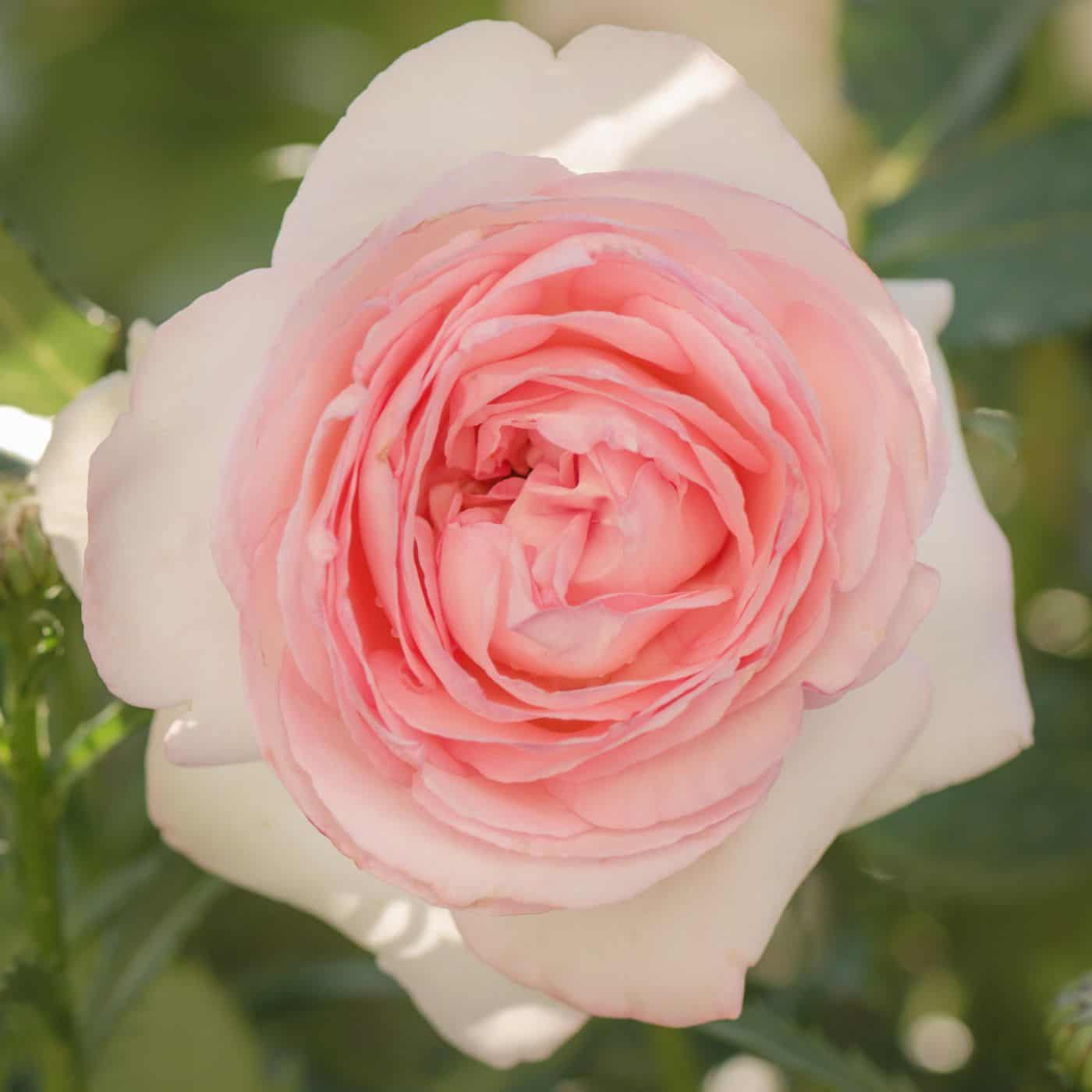
1. Eden rose
The Eden rose is a very popular large-flowered climbing rose with pink flowers. This variety was introduced in 1985 by breeder Marie-Louise Meilland.
Flowers of the Eden rose are full, ruffled, and fragrant and have a color classification of PB (Pink Blend). This cultivar is classified by the American Rose Society (ARS) as a Large-Flowered Climber (LCl).
The Eden rose can grow canes up to 8 feet tall (with vertical support) with an arching habit making it the perfect addition to bring height into the garden. This rose is also disease-resistant, making it ideal for novice gardeners who want something easy to care for yet still stunningly beautiful.
The Eden Rose is an ideal choice for those looking for a gorgeous showstopper of a flower. With its unique blend of pink tones, sweet fragrance, and low maintenance requirements, this hardy climber will bring beauty into any space – whether you’re an experienced gardener or just starting out.
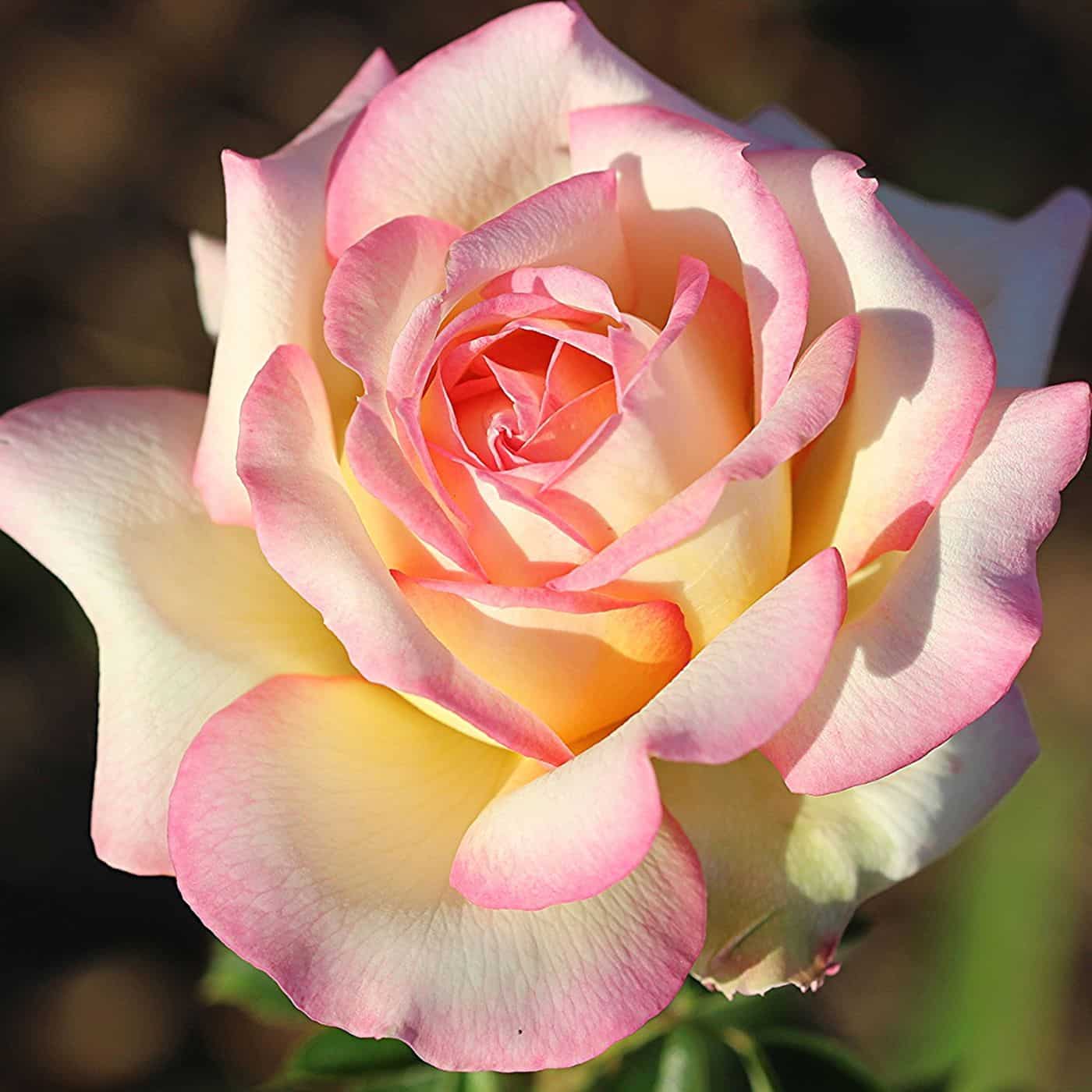
2. Peace rose
The Peace rose is a very popular hybrid tea rose variety known for its bicolor yellow and pink petals. Bred and exported by French horticulturist Francis Meilland in the 1930s, it was propagated in the USA by the Conard Pyle Co. during WWII and introduced in 1945.
The Peace rose is classified as a hybrid tea (HT) variety. The color classification is PB (Yellow Blend), with very large and very full blooms.
Peace roses are ideal for North American climates and don’t require too much maintenance. They should be planted in well-drained soil with plenty of sun exposure to ensure they thrive.
The Peace rose may be just the answer for those seeking a low-maintenance, eye-catching display. This resilient bloom will reward you with beautiful flowers year after year with minimal effort required on your part – remember to give them some TLC when needed. These hardy blooms will bring beauty to any home or garden space, whether as a gift or as part of your landscape design project.
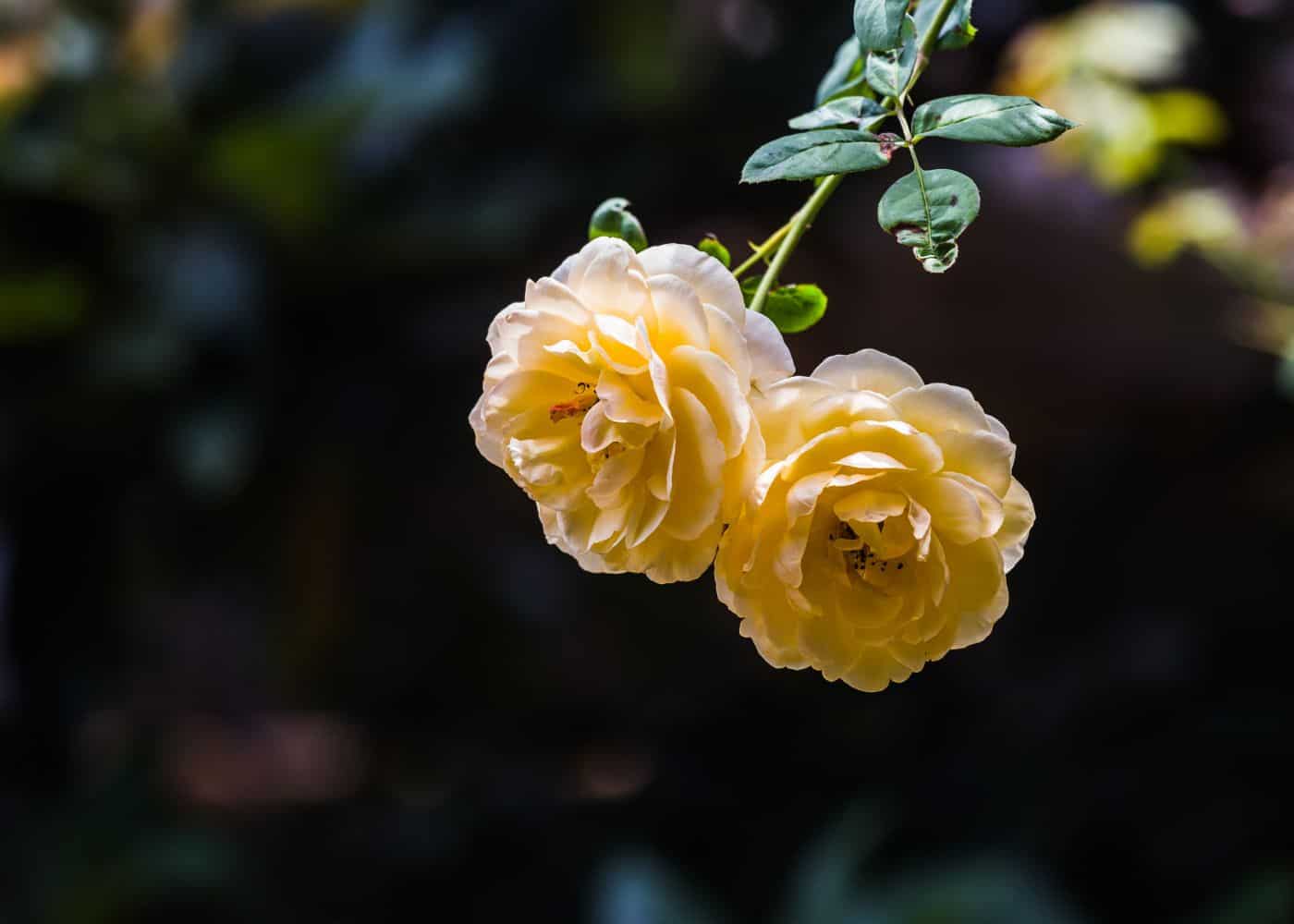
3. Julia Child rose
The Julia Child rose is a bright and cheerful Floribunda (Fl) variety introduced in 2006. Bred by Tom Carruth, this medium yellow bloom has an unmistakable lemony fragrance and can be used to add color and life to any garden or landscape.
The large blooms are semi-double with petals that curl outward from the center like a cupped hand. These roses make for great cut flowers too. Their long stems are perfect for arrangements, bouquets, or even just as a single stem in a vase on your kitchen table.
Their hardiness ensures you won’t have to spray them with chemicals like fungicides or pesticides – they can take care of themselves. Plus, they grow quickly so you’ll have plenty of blooms before you know it.
Julia Child roses also look amazing when planted en masse along walkways or around gardens, where their vibrant colors will really pop against the backdrop of green foliage. They can also be used as part of an informal hedge when planted closely together; their dense growth habit makes them ideal for creating privacy screens without having to sacrifice beauty.
Whether you’re looking for something special for your own garden or want to surprise someone else with the gift of flowers, Julia Child roses won’t disappoint. With their beautiful color and captivating scent, these hardy little shrubs are sure to bring joy into anyone’s life – just like the famous chef herself did during her lifetime.

4. Black Baccara rose
The Black Baccara rose is a stunning hybrid tea variety that was introduced in 2002 by The Conard-Pyle Company. This gorgeous hybrid tea rose offers a spectacular deep red hue and fragrant aroma, making it the ideal choice for any garden or outdoor living area to create an atmosphere of romance. This classic rose has long stems and wide petals that produce showy flowers from early summer through fall. It can reach up to five feet tall, making it perfect for adding height and drama to your landscape design.
This modern rose species is also known for its easy care requirements; give it plenty of sun, water it regularly, and prune back old growth as needed throughout the growing season. And don’t forget about fertilizing – this will help keep your Black Baccara healthy and happy.
This particular rose is a great choice for the inexperienced gardener since it doesn’t require extensive upkeep apart from standard care. Plus, its disease resistance makes it even easier for novice gardeners.
Black Baccara offers a unique look that stands out among other rose varieties. Its dark red hue adds depth, while its larger size gives off an impressive presence in any outdoor space. Whether you’re hoping to create a romantic atmosphere or add some eye-catching beauty to your backyard oasis – this gorgeous bloom is sure to do the trick.

5. Iceberg rose
The Iceberg rose is a true classic, having been introduced in 1958 by McGredy & Son. It’s a Floribunda (Fl) variety with white, near-white, and white blend blooms that make it perfect for adding a bit of elegance to any garden. The blooms are double-petaled and can be up to four inches wide when fully opened. They have an exquisite scent that will fill the air around them with sweet floral notes.
One of the most popular white rose varieties, Iceberg roses are incredibly hardy and require minimal care; they’re drought tolerant and resistant to most common diseases like black spot or powdery mildew. Regular pruning lets you keep your Iceberg rose bush at the desired size while encouraging more flowering throughout the season. The shrub has an upright growth habit, making it ideal for creating hedges or as border plants along pathways or driveways – anywhere you want something eye-catching yet low maintenance.
These beauties bloom from late spring until frost, so you have plenty of time to enjoy them all summer. And if deadheaded regularly, they’ll continue producing flowers even longer into fall than other rose varieties might. Plus, since they’re disease resistant, there won’t be much need for spraying pesticides, making them great for eco-friendly gardens too.
The Iceberg rose is an excellent choice for your garden for a touch of elegance and sophistication. Its elegant blossoms will bring charm and sophistication, offering a long blooming period from late spring until frost with minimal care required. Deadheading regularly will encourage more flowering throughout the season, while its upright growth habit makes it ideal for creating hedges or as border plants along pathways or driveways.

6. Lady of Shalott rose
The Lady of Shalott rose is a modern hybrid tea rose variety bred by David C. H. Austin of David Austin Roses, Ltd., and introduced in 2009. This unique English shrub-type rose has showy orange and orange blend blooms with a strong fragrance that will fill your garden with its sweet aroma. The petals are full and cupped, making them great for cutting flowers to bring indoors or as an accent flower in floral arrangements.
This popular variety produces long stems with many double flowers per stem, so you get plenty of bang for your buck. Plus, the wide range of colors makes it easy to match this beauty with any other varieties you may have planted in your garden already.
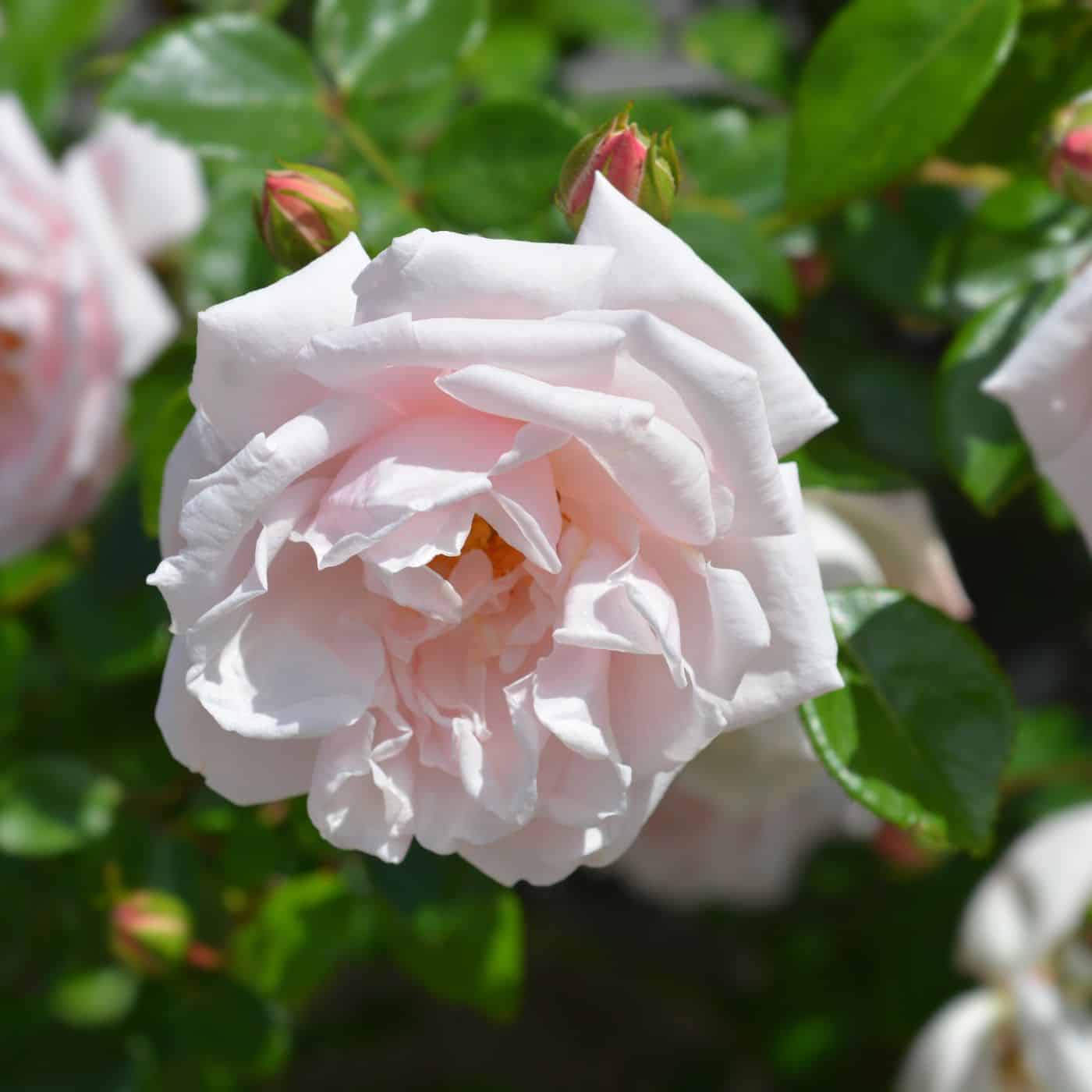
7. New Dawn rose
The New Dawn rose is a popular old-school choice for gardeners who want to add some color and elegance to their landscape. Its light pink blooms can bring beauty and serenity to any outdoor space. This large-flowered climber (LCl) variety is particularly eye-catching with its large, fragrant flowers that bloom from late spring through early fall.
This particular rose has been around since 1930 when it was introduced by the Somerset Rose Nursery. Its attractive appearance and low-maintenance requirements make it a popular choice among novice gardeners and those with more experience in outdoor plant care. This rose is ideal for novice gardeners or those unfamiliar with gardening due to its hardiness and minimal upkeep.
One thing you should know about New Dawn roses is that they need plenty of sunlight and well-draining soil in order to thrive. If these conditions aren’t met, you may deal with wilting leaves or lackluster blooms come summertime. To ensure your roses stay healthy and happy all season long, make sure they get at least six hours of direct sunlight each day and are planted in soil that isn’t too heavy or clay-like; if necessary, amend your existing soil with compost before planting them.
Finally, while New Dawns require less upkeep than other varieties, due diligence still needs to be taken when caring for them. Regular deadheading (removing spent blossoms) will encourage more flowers, while fertilizing every few weeks during peak bloom times will give them an extra boost of nutrients needed for optimal health year round.
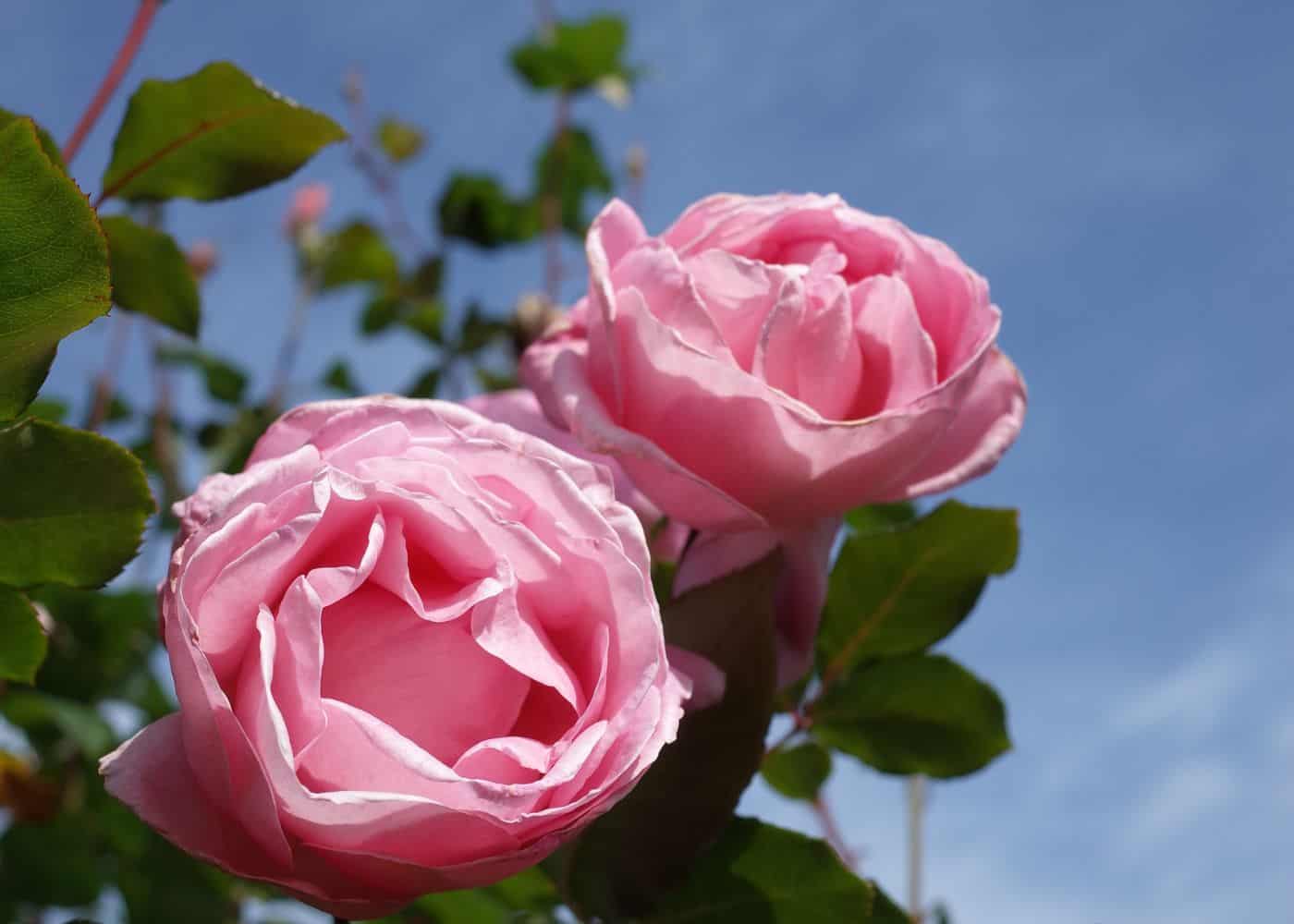
8. Queen Elizabeth rose
The Queen Elizabeth rose is a Grandiflora (Gr) variety that was introduced in 1954 by Germain’s. This timeless rose that started a whole new class boasts deep pink medium-sized blooms and has earned its enduring popularity.
The Queen Elizabeth rose grows up to 4-5 feet tall and can spread 3-4 feet wide. Its sweet-smelling blossoms come out from June to October, making it an ideal addition if you like a long blooming season. It requires full sun and well-drained soil with moderate watering; however, too much water will cause the leaves to turn yellow and drop off prematurely.
This hardy rose bush is disease-resistant but can be prone to mildew if not cared for properly. Pruning should take place in early spring before new growth begins and again after flowering has finished in late summer/early fall. Deadheading spent blooms will encourage more flower production throughout the season as well as help keep your plant looking neat and tidy all year round.
Queen Elizabeth roses are perfect for beginner gardeners who want something low maintenance yet still beautiful enough to impress their neighbors. The bright pink blossoms also make excellent cut flowers that last up to two weeks, providing a pop of color indoors.
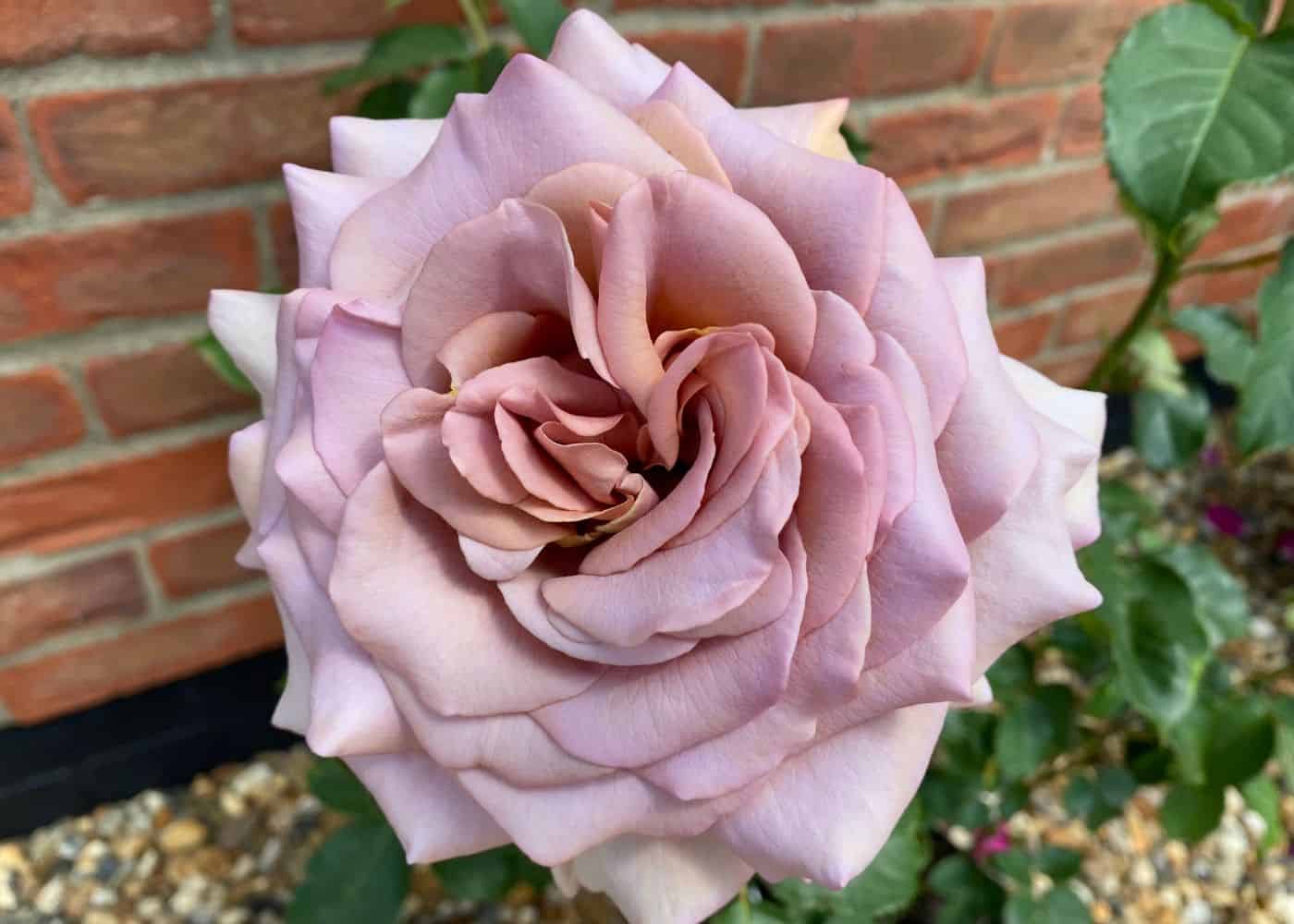
9. Koko Loko rose
The Koko Loko rose is a stunning floribunda bred by Christian Bedard for Weeks Roses. Introduced in 2012, its mauve and mauve blend colors are sure to add some pizzazz to any garden.
The Koko Loko has an average bloom size of 4 inches, with a moderate fragrance that will make your yard smell heavenly. This hardy variety can tolerate most soil types and climates, although it prefers well-drained soil in full sun or partial shade locations.
Pruning should be done in late winter or early spring before new growth begins; this encourages more flowering branches as well as bushier plants overall. Deadheading spent flowers helps promote additional blooming throughout the growing season too.
When planted and tended to correctly, the Koko Loko rose will provide an abundance of lush foliage and beautiful blossoms from May through September, extending even into October. Whether used alone or mixed with other varieties of roses, the Koko Loko rose will bring beauty to any garden. Its unique coloring makes it stand out among other roses, while its robustness ensures years of enjoyment without much effort on your part.

10. Abraham Darby rose
The Abraham Darby rose is an apricot blend shrub-landscape variety of rose that was introduced in 1985 by David Austin Roses, Ltd. It has a bushy habit with strong upright growth, and its flowers have a classic cupped shape. The blooms are fragrant and come in shades of soft yellow or peach blushed with pink. This versatile variety can be used as a specimen plant, planted en masse for an eye-catching display, or grown as part of a mixed border.
This beautiful flower is low maintenance and easy to care for; it requires minimal pruning and deadheading throughout the season but will benefit from occasional fertilization during the growing period. The Abraham Darby rose prefers full sun but will tolerate partial shade; however, if planted in too much shade, it may not produce many blooms. Its disease resistance is good, so you won’t need to worry about spraying it, as some other varieties may require.

11. Tropicana rose
The Tropicana rose is a classic hybrid tea (HT) variety of rose introduced in 1962 by J&P. It has an eye-catching orange-red and orange-red blend color, with large and full petals. The blooms have an open shape, giving them a graceful look. Tropicana roses are quite fragrant, making them perfect for cutting to bring indoors or using as part of a bouquet. They make excellent garden plants, too, with their tall stems and bushy foliage adding texture to any landscape design.
Tropicana roses thrive in sunny spots with well-draining soil and regular watering throughout the growing season. To encourage healthy growth and abundant blooms, it’s important to fertilize regularly – once every two weeks during the spring and summer months should do the trick.
Deadheading spent flowers will also help promote new blooms throughout the season. Pruning back old canes each year will keep your Tropicana rose to look its best over time – just be sure not to prune too much at once, or you may risk damaging your plant’s health.

12. Ebb Tide rose
The Ebb Tide rose is a beautiful mauve blend variety introduced in 2006 by Weeks Roses. This Floribunda variety, reaching up to 4 feet in height and spreading 2-3 feet wide, is a hardy rose with great potential.
The Ebb Tide rose produces large clusters of flowers that have an exquisite fragrance and are sure to bring beauty and life to the landscape. The blooms on this variety range from medium pink to lavender in color, giving it an eye-catching look that stands out among other roses.
It’s easy to care for, too; prune it regularly for the best results. The Ebb Tide rose does well in full sun or partial shade, making it perfect for any outdoor space you may have available. Additionally, the foliage on this plant is disease-resistant, so you won’t need to worry about treating your plants often, if at all.
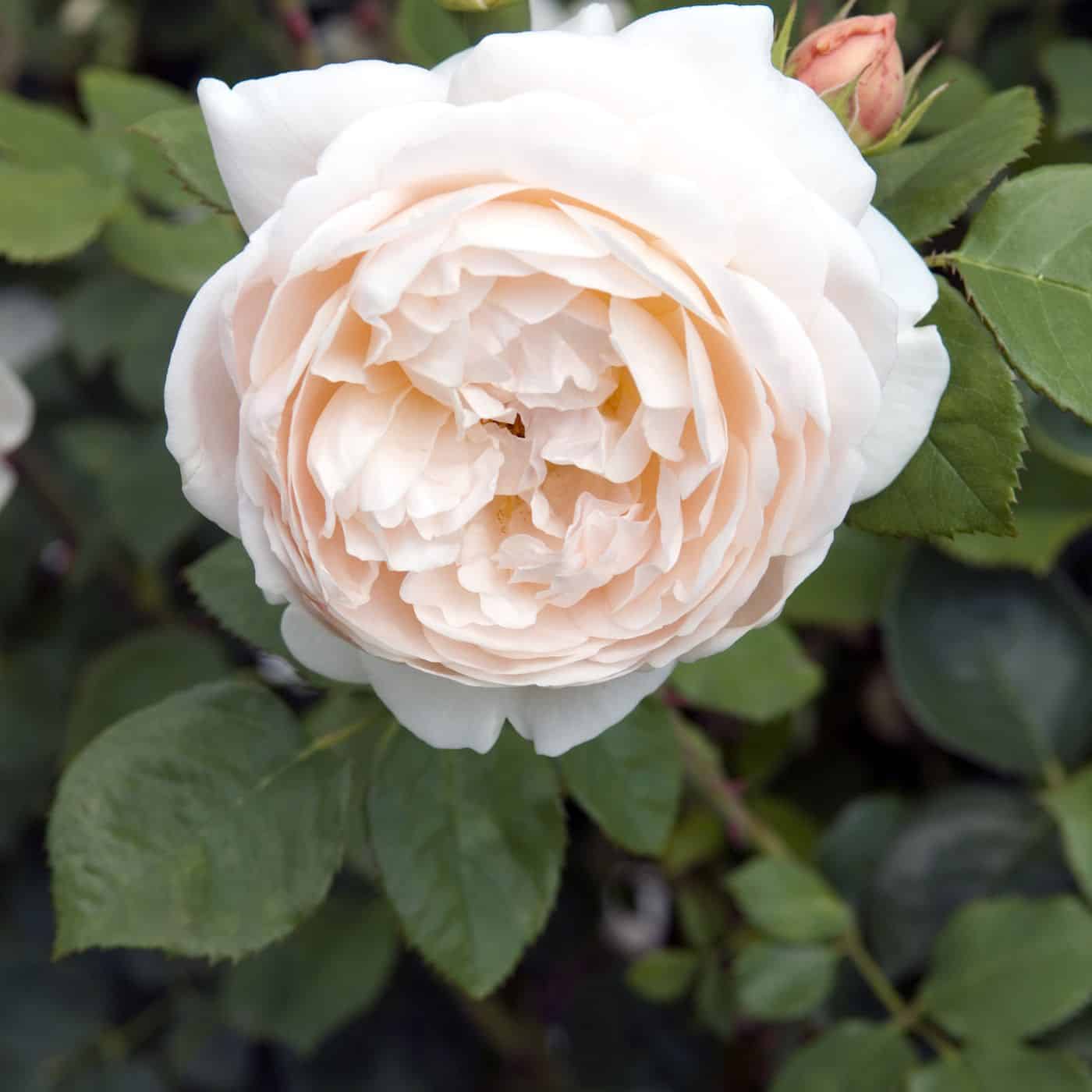
13. Evelyn rose
The Evelyn rose is a stunning shrub-landscape variety introduced in 1991 by David Austin Roses, Ltd. This apricot and apricot blend flower has an unmistakable beauty that can brighten any garden or landscape. The velvety petals are shaped like cups with a delightful fragrance that will linger in the air for hours after they bloom.
Evelyn roses are easy to care for and require minimal maintenance. They prefer full sun but can tolerate partial shade, making them ideal for North American gardens. Well-drained soil is ideal for these roses to thrive, and fertilization during their growing season should be done routinely in order to guarantee a full bloom throughout the summer. Pruning is also important as it helps keep the plant looking neat and tidy while promoting new growth throughout the year.

14. At Last rose
The At Last rose is a beautiful, apricot-blend Floribunda variety of roses developed by Heather Horner and introduced to the market in 2016 by Proven Winners Color Choice. This stunning bloomer has been delighting gardeners ever since with its long-lasting blooms and attractive foliage. The large blossoms are ruffled and have an old-fashioned look that adds charm to any landscape. The petals have hints of yellow, pink, orange, and peach, giving it an overall warm hue that stands out from other roses.
The At Last rose is easy to care for; it’s drought tolerant once established, so you don’t need to worry about giving it too much water or overfeeding it with fertilizer. It prefers full sun but can tolerate some shade as well, so you can find a spot in your yard where this beauty will thrive.

15. Peach Drift rose
The Peach Drift rose is a beautiful shrub-ground cover hybrid bred by Alain A. Meilland of Meilland Star Roses in 2006. It has an apricot and apricot blend (ab) color, making it stand out. This variety of roses is known for its low maintenance needs, making it perfect for busy homeowners who don’t have time to tend to their garden daily but still want to enjoy its beauty.
The Peach Drift rose can thrive in most climates with minimal care and attention, so you don’t need to be a gardening expert or spend hours tending your roses each week – give them some water, and they will reward you with vibrant blooms all season long.
This variety produces large clusters of small, semi-double flowers that are fragrant and last until the first frost hits your area. Its foliage is deep green and glossy, adding further visual appeal to this stunning flower. As well as being attractive in the garden, drift roses also make great cut flowers due to their long stems, which provide plenty of length when arranging bouquets or centerpieces.
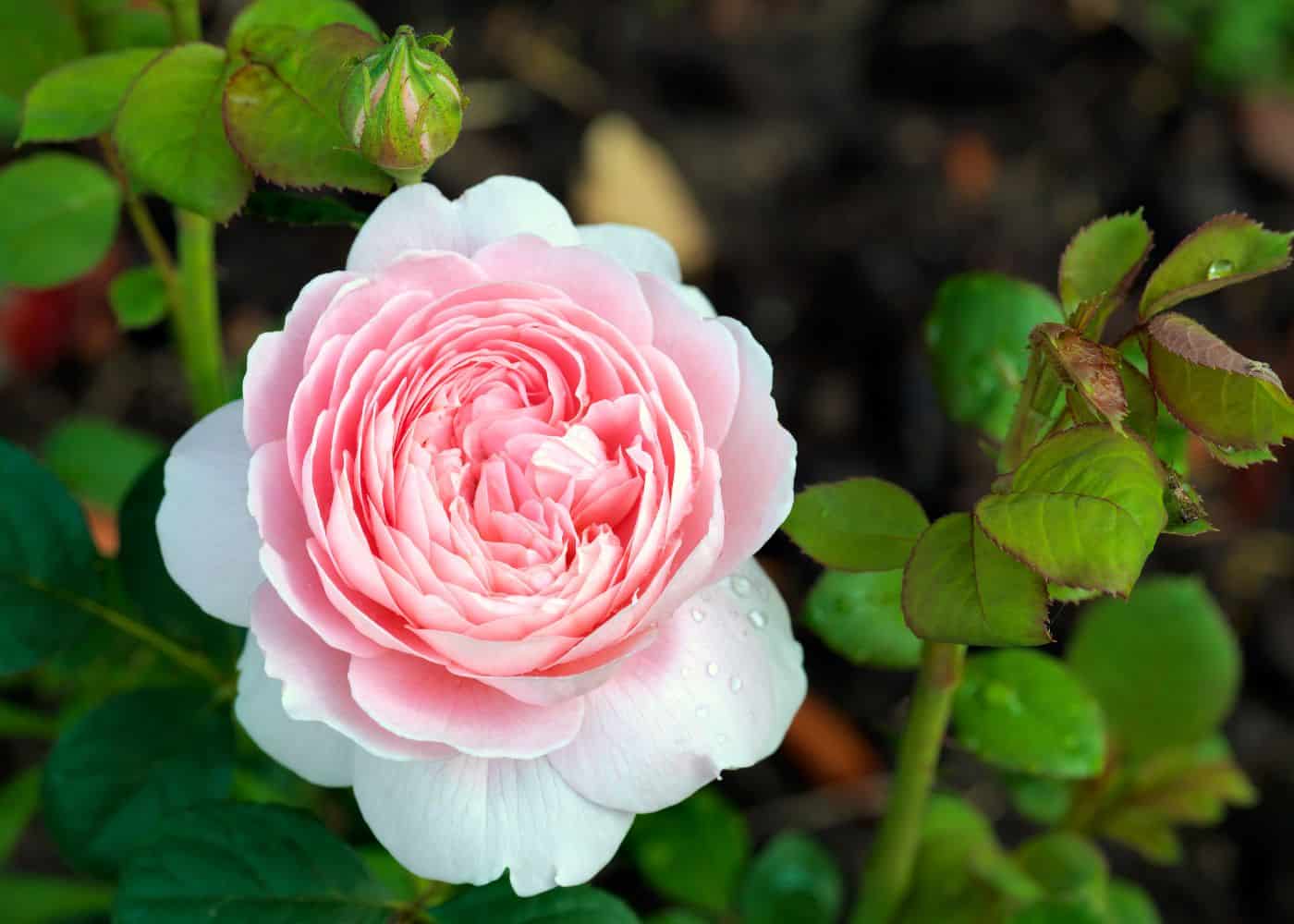
16. Queen of Sweden rose
The Queen of Sweden rose is a stunning, light pink shrub rose that was introduced by David Austin Roses, Ltd. in 2004. It has beautiful, fragrant blooms and an upright habit that makes it perfect for landscaping or as part of a flower bed.
The flowers are large with many petals and have a soft yellow center, giving the overall effect of a very delicate bloom. This variety is easy to care for and will reward you with plenty of blooms throughout the season if you give it some basic attention, like deadheading spent flowers and pruning back any overly long branches or shoots.
This gorgeous shrub can reach up to 4 feet tall when fully mature but stays relatively compact at just 2-3 feet wide, so it won’t take up too much space in your garden or yard. Planting in well-drained soil enriched with compost will ensure your roses thrive during the hot summer months while mulching around them will help retain moisture during dry spells.

17. Free Spirit rose
The Free Spirit rose is a Hybrid Tea (HT) variety introduced by Rosen Tantau in 2009. Its oblong buds are orange and blend into an intense, bright orange color with a hint of yellow at the edges. The full-petalled blooms open to reveal large golden stamens, creating an exquisite display that will take your breath away. This rose’s fragrant aroma and hardiness to illness have made it a favorite among horticulturists worldwide.
This beauty can reach up to 5 feet tall and 4 feet wide when mature, making it perfect for hedges or as a stand-alone specimen plant. It’s also very easy to care for – give it plenty of sun and water during the growing season and prune regularly to keep its shape tidy. If you’re looking for something special that will last throughout the seasons, then look no further than the Free Spirit rose.
Its vibrant colors make it ideal for adding pops of color around your landscape, while its long-lasting blooms ensure you’ll be able to enjoy them all summer long without having to worry about deadheading or replanting every few weeks like some other varieties require. If you’re feeling creative, you can use this versatile flower in floral arrangements or bouquets – from cutting gardens to window boxes – giving your outdoor space a unique touch that will have everyone talking.
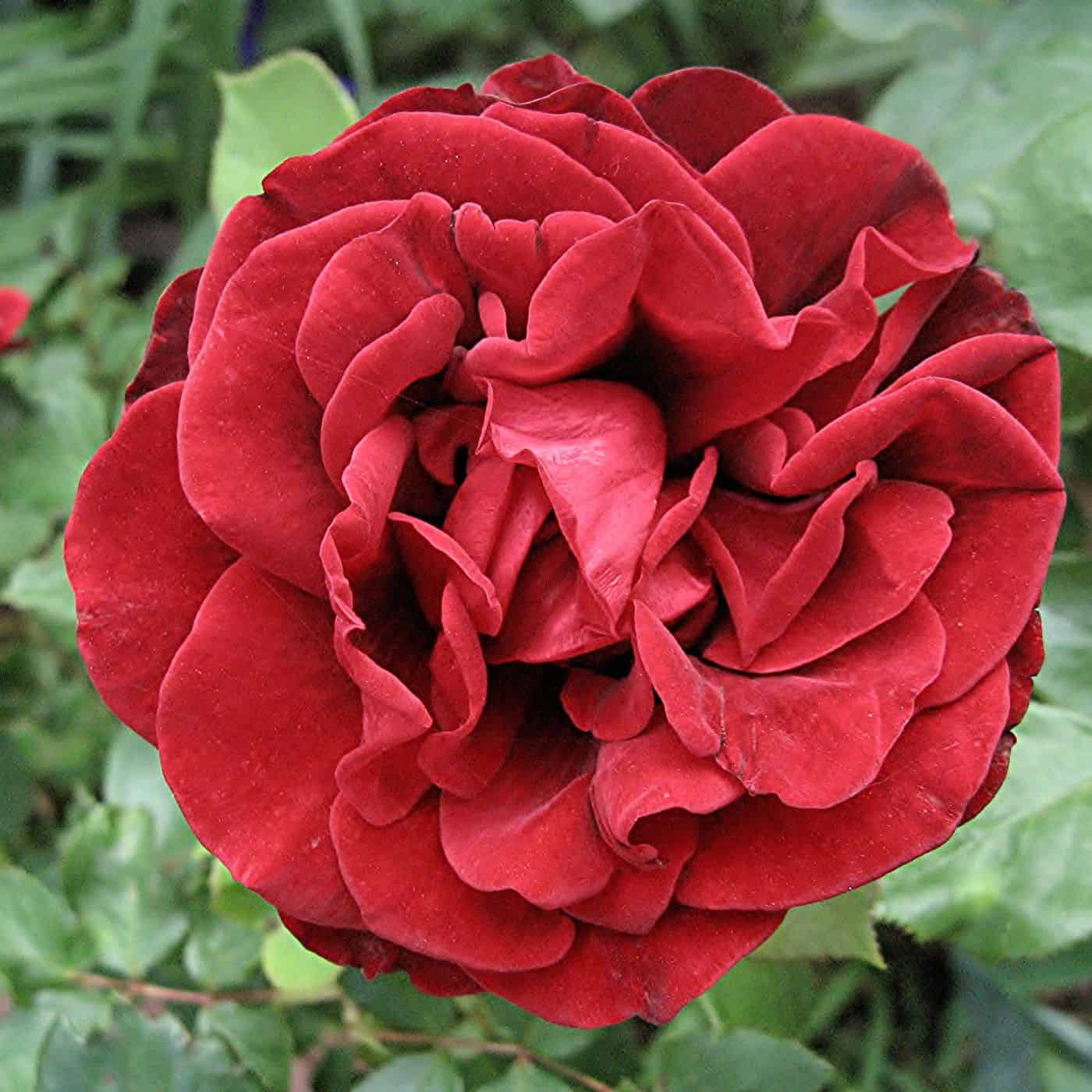
18. Don Juan rose
The Don Juan rose is a large-flowered climber (LCl) with deep, dark red petals. It was introduced by J&P in 1958 and has since become one of the most popular roses for gardeners. This variety is well known for its rich color and robust growth habit, making it an ideal choice for any garden. The lush petals of this rose stand out in contrast to its vibrant green foliage, creating a visually stunning display.
Don Juan roses are very easy to care for and require minimal maintenance once established. They can be planted in either full sun or partial shade but will thrive best when given plenty of sunlight each day. When planting, choose a spot with good drainage, as these plants do not like wet feet. Water regularly during dry periods to keep your Don Juan looking healthy and vibrant all season long. Pruning should only be done if necessary, as too much pruning can damage the blooms on this variety of rose bushes.
This striking bloomer produces gorgeous flowers throughout spring and summer months, with some reblooming possible into autumn depending on climate conditions in your area. Each flower contains between 25 – 40 petals creating quite an impressive display when fully opened. These flowers also have a lovely fragrance that adds another layer of enjoyment while admiring their beauty from afar or close up.

19. Distant Drums rose
The Distant Drums rose is a stunning shrub-landscape variety of mauve and mauve blend that was introduced by Iowa State University in 1984. This low-maintenance beauty grows up to five feet tall with multiple branches, making it an ideal choice for any garden or landscape.
Its dark green foliage creates a beautiful contrast against the clusters of small blooms, which open to reveal shades of deep pink and lavender. The sweet fragrance adds an extra layer of charm to this classic rose variety.
These roses are incredibly easy to care for, requiring minimal pruning and only occasional watering during dry spells. They also have great disease resistance, so you won’t need to worry about treating them with chemicals or other treatments often found in conventional gardening methods. As an added bonus, these roses can be planted directly into the ground without needing any special soil preparation beforehand – perfect for busy homeowners who don’t have time for complicated gardening tasks.

20. Rio Samba rose
The Rio Samba rose is a Hybrid Tea (HT) variety with yellow blend coloring. Its petals are creamy yellow at the base, transitioning to a soft pink and finally to deep red near the tips. The flowers have an old-fashioned look with their large size and ruffled edges. This rose can grow to a substantial size, ideal for bringing life and character to any garden.
This showy beauty requires full sun exposure for optimal growth and blooming potential, so make sure you pick a spot that gets plenty of direct sunlight throughout the day. As far as soil goes, this rose prefers well-draining soil that’s rich in organic matter like compost or manure – although it will still thrive even if your soil isn’t ideal. When planting your Rio Samba roses, give them enough space; they need about two feet between each plant for adequate air circulation, which helps prevent disease problems down the road.
FAQs about popular rose varieties
How many varieties of roses are there?
There are more than 37,000 varieties of roses. Each kind of rose possesses its own distinct qualities, from size and form to hue and fragrance. You can search the American Rose Society’s database for information on specific varieties.
What are the different kinds of roses and their meanings?
Red roses signify passionate love, while yellow roses represent friendship or joy. Pink roses stand for gratitude and admiration. White means purity and innocence, orange indicates enthusiasm or desire, and lavender stands for enchantment or royalty. Coral means passion and desire. Lastly, since blue roses don’t exist naturally, they symbolize mystery or the impossible to achieve.







